Genre: RPG Developer: C&E Inc Publisher: Super Fighter Team Players: 1 Released: 2006
To say that I was excited about Beggar Prince would be quite the understatement. For months, I stared at those screen shots on the official website and wondered when I would get to finally play it on my Genesis. I imagined the clamshell case and full-color manual and tried to wrap my brain around actually playing a brand-spanking new 16-bit RPG. Would it be all it had been hyped to be over the Internet, or would it be more of a novelty and not the engaging gaming experience we were all hoping for?
After many an hour of playtime, I’m very pleased to say that it is indeed the former. Once you get past the reality of what Beggar Prince represents, there is plenty of substance that allows you to enjoy it for what it is: a great RPG. We’re talking 32 megs with battery back up here (and a very easily replaced battery at that; no soldering or tape required!), whose massive quest is nicely complimented by an interesting combat system and some nice visuals.
The story is straight out of Mark Twain’s classic The Prince and the Pauper, only I guess the names were changed to protect the innocent. Prince Steven of the Kingdom of Shatt, tired of the royal routine and wanting a change, escapes from the castle and bumps into a pauper, with whom he changes places for the day. Unaware that the evil Cat Minister knows of his plan, he sets out to see the world as a common man, only to be refused entry to the castle later in the evening. The Cat Minister has set a plan in motion to conquer the kingdom, and his first action is to turn all the city residents into cats! Now, the prince has to set things right, alone and armed with only his tenacity and magic.
It’s pretty striking that the whole adventure revolves around a single persona, as most RPGs tend to involve large casts of characters. The whole of Beggar Prince is played with only the Prince, and while some modern gamers might frown on this, I find it to be refreshing and charming. It’s nice to not have to go through large inventories for several characters and only have to concentrate on a single hero.
That’s something else that I would wager made this something of an oddity at the time of its original release, and the same holds true today. The entire set up of Beggar Prince is unlike most RPGs of the time. In addition to the single playable character, there’s also no field magic, no money to be had or used, and only a single particular piece of equipment armed at any given time. Prince Steven automatically upgrades whenever he obtains a new weapon or piece or armor, so there’s no need to fiddle with the inventory in order to find the best combination of equipment.
Adding more to the game’s uniqueness is its combat system. Predating some modern RPGs like Grandia, combat is turn based, but done through the use of a stamina bar. Both the Prince and his foes perform their attacks through these bars. Enemies always attack second, giving the player plenty of opportunity to heal or use an item. However, the stamina bar is a double-edged sword. Magic drains half of it, allowing you to only use a single powerful spell per round. This means that some strategy and planning are required in order to optimize movements for each round. The downside is that even if you eliminate all but one of your foes, he still attacks the same amount of times as a full complement, since he now has that complete stamina bar all to himself.
Another change to the genre’s standards is that no matter what equipment you have on or what level you are, enemies consistently do the same amount of damage. You of course, will wipe the floor with them, but it’s odd to see that the new armor you found essentially does…nothing. Again, this is offset by the fact that your healing and magic recovery items both increase as you gain levels. That simple loaf of bread that healed only sixty points or so eventually goes on to recuperate over two hundred. I assume that this is all done in an effort to keep gameplay and inventory as simple as possible, and while it takes some getting used to, it actually works pretty well.
Everything is part of a delicate balance here, and the magic is no exception. Divided into elements (fire, wind, water, earth, light/dark; along with voodoo, spirit, and healing/status types), each requires you to know your enemy well enough to understand which magic type will be most effective. As you progress, new items provide new spells, in addition to those you obtain through regularly raising levels. By the time you’re around level ten, you’ll have a great compliment of spells to use alongside your standard attacks (which also go up in level and change depending on which weapon is equipped).
For a game that just turned ten years old, Beggar Prince is still quite pretty to look at. The bright and detailed visuals put the limited color palate of the Genesis to good use, and the large sprites are never a strain on the eyes. I only wish the soundtrack were as appealing, as most of the audio is unremarkable (with the exception of some nice town themes).
My only lament, in terms of gameplay, has to be the frequency of the random battles. It’s not something to which I normally object about games of the era, but the encounter rate here can sometimes reach Vay-like proportions, which grates on your nerves after a while. The sparse lack of sites to heal up compound this, and you can sometimes find yourself low on magic and healing items without anyway to recharge. Thankfully, gaining a level automatically replenishes you, and there are beds in the towns that are sprinkled throughout the land. Nothing like crashing at someone’s house! The developers offer some relief with healing fountains in most dungeons, but these usually refill either your health or magic and not both simultaneously.
The large variety of spells and weapons, the interesting and diverse enemies, and the tons of cool items and dungeons all come together to give us what we want: a fulfilling and enduring RPG. Super Fighter Team adds to this an excellent translation, which finally allows this formally Taiwan-only game to be enjoyed by gamers everywhere. I am especially amused at some of the pop culture references, such as a feline enemy shouting all your elders are belong to cats! when he’s captured a villager’s grandfather and the Han Solo quote at the beginning. Great stuff!
A word of warning though: if you bought one of the first two runs of Beggar Prince, their save functions do not work with a Pioneer Laseractive, X’Eye, or CDX due to the intricacies of the game’s original code. This has nothing to do with the localization and was most likely done by C&E Inc. on purpose, since none of those Genesis varieties were present in Taiwan in sufficient numbers to warrant compatibility. It will however, run just fine on any of the standard three models and the Nomad, just be sure to remove your 32X from your model one or two Genesis before playing. SFT listened to the concerned masses’ outcry and was finally able to fix the problem. As a result, the recently-released third run is now fully compatible with all Genesis variations.
In the end, it all boils down to whether or not you should spend your hard earned cash on a new Genesis game. At $46 after shipping, some people questioned the investment. Those people are wasting valuable time that could be put to better use playing Beggar Prince. Releases like this don’t come often at all, and anyone with any love for the console at all needs to check this one out. It’ll look great on your shelf too, with its brand-new clamshell case (that’s right, nothing recycled) and full color manual. This is the game Genesis fans have long anticipated, and it deserves a rightful place in your collection.
SCORE: 8 out of 10


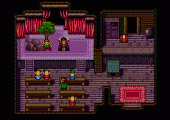
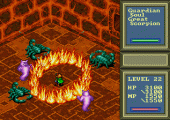
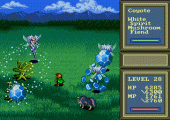
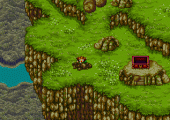
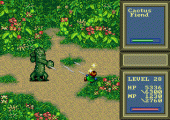
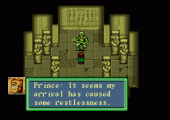
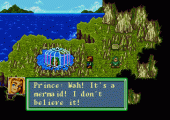
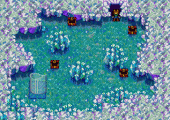
I was very impressed how the graphics on maps outshine pretty much any MD RPG released in the system´s original lifetime. Even Sega´s own Phantasy Star IV can´t keep up visually; MIND YOU, I am specifically speaking of town and dungeon graphics, not battles.
Also I dig the simplistic gameplay mechanics, abandoning even RPG staples such as equipment change or a monetary system. It makes for an easy to learn and fun game.
Letdown is the loads of bugs, ranging from simple freezes to game breaking things that can make the game impossible to finish.
I had a lot of fun with this game. There are many nice environments, spells and monsters to look at, some really catchy music, a fun and and original battle system and lots of tricky puzzle solving in this game. The battles can get a bit tiresome though, and the bugs definitely take it down a notch.
Beggar Prince is definitely a fun game, and the technical aspects are impressive, but there’s just a little too many glitches and gameplay annoyances to rate the game super high. Don’t get me wrong, there’s some interesting ideas here, like the battle system, but things end up feeling half-baked. It’s a good, but not great game.